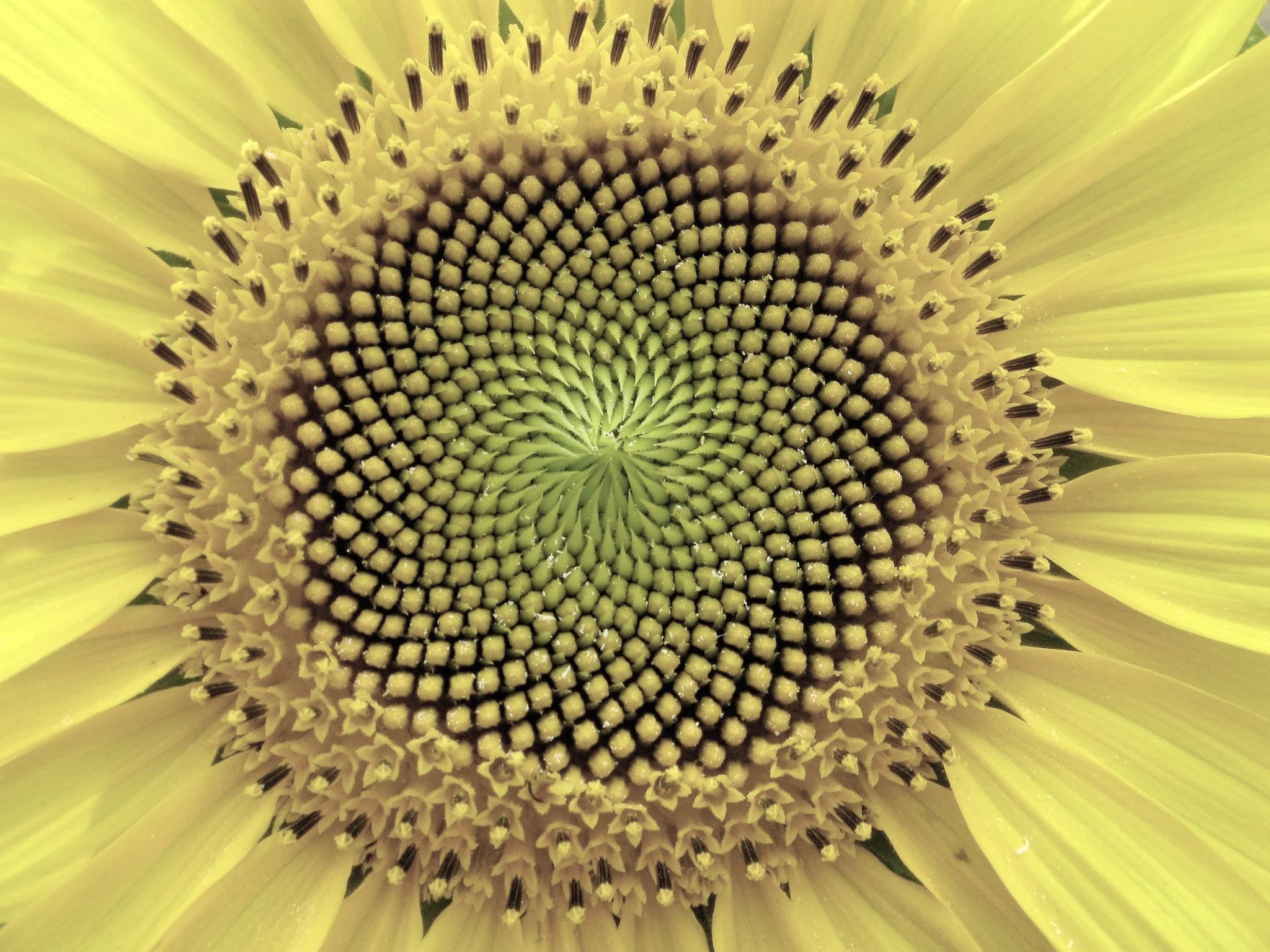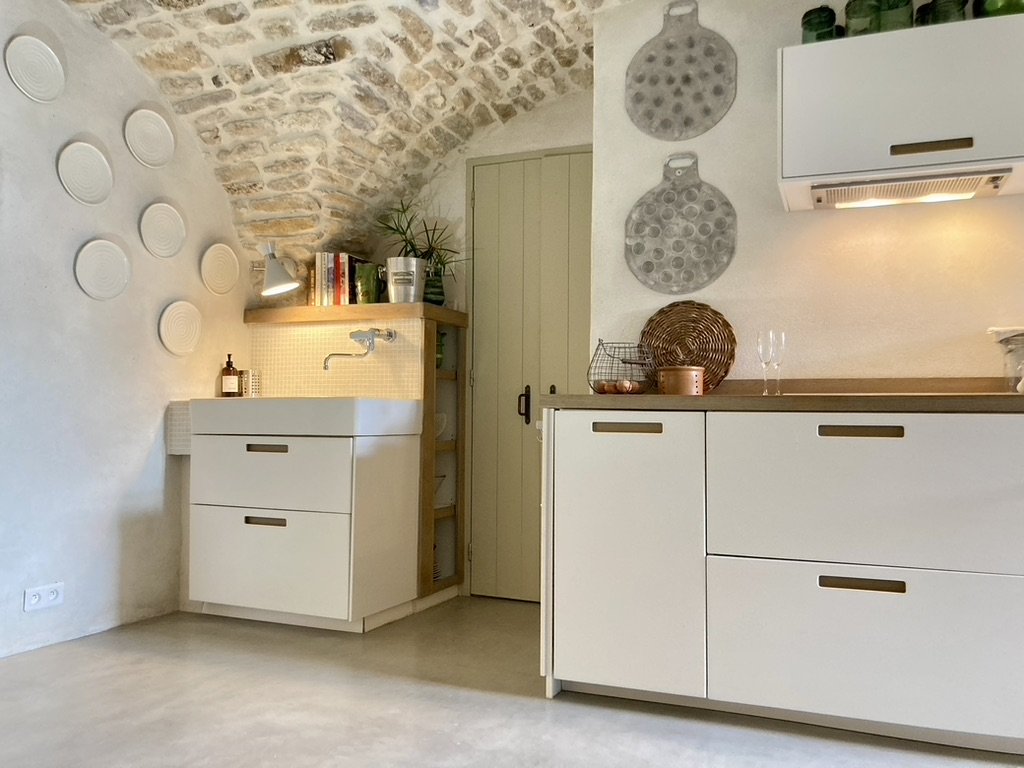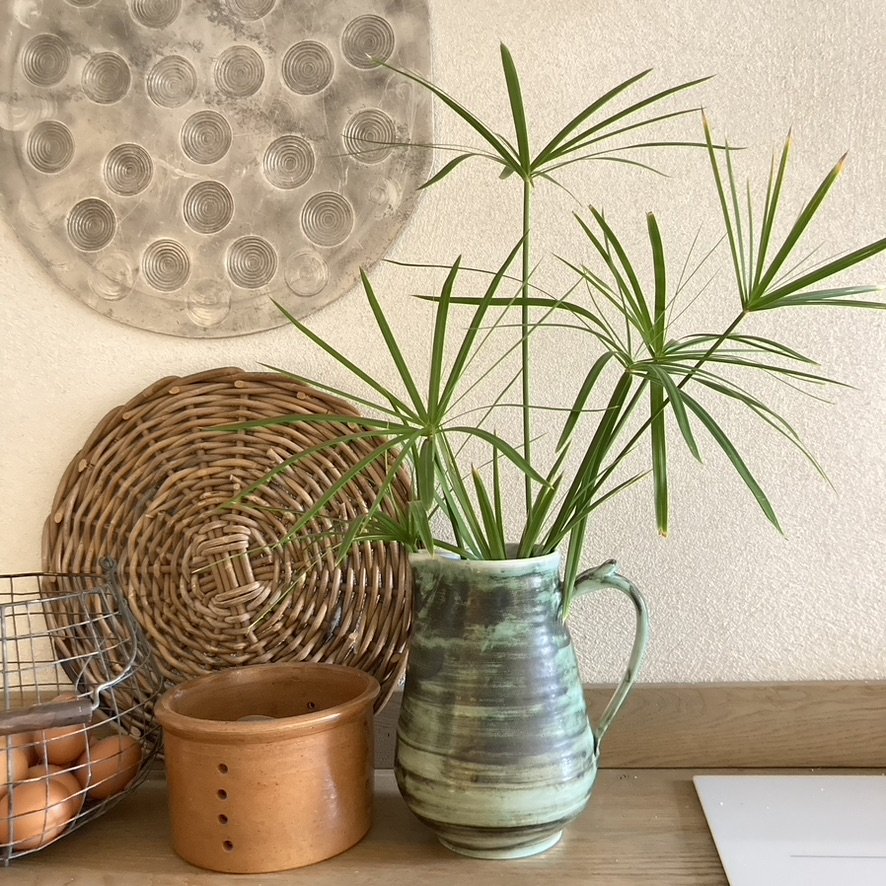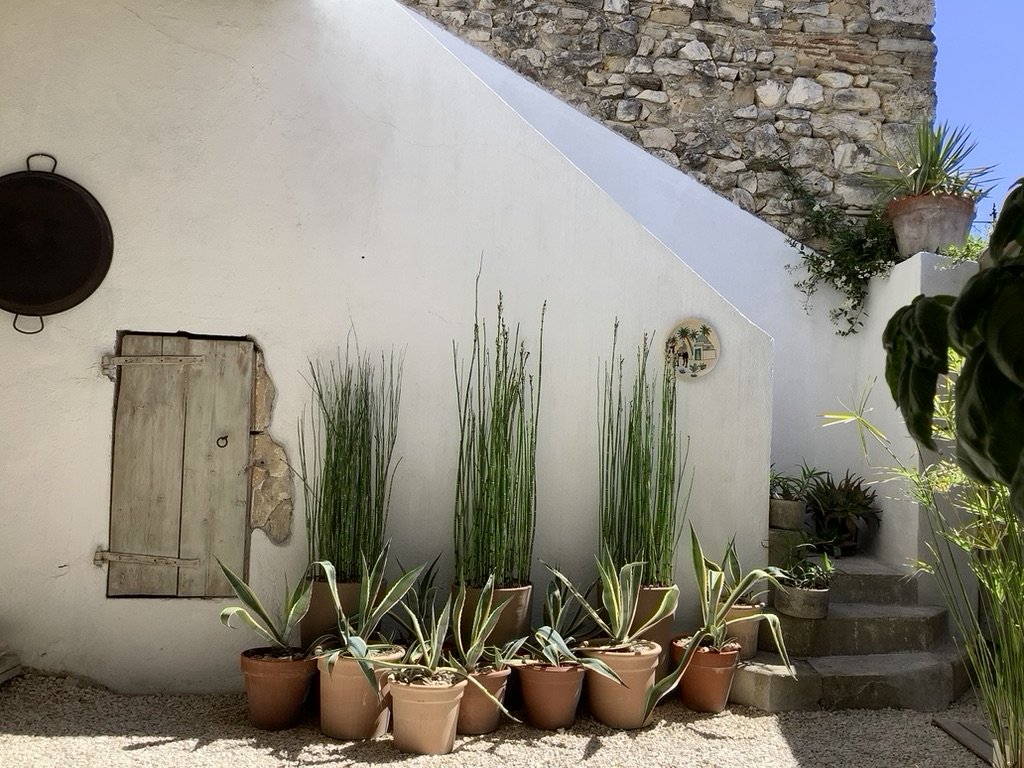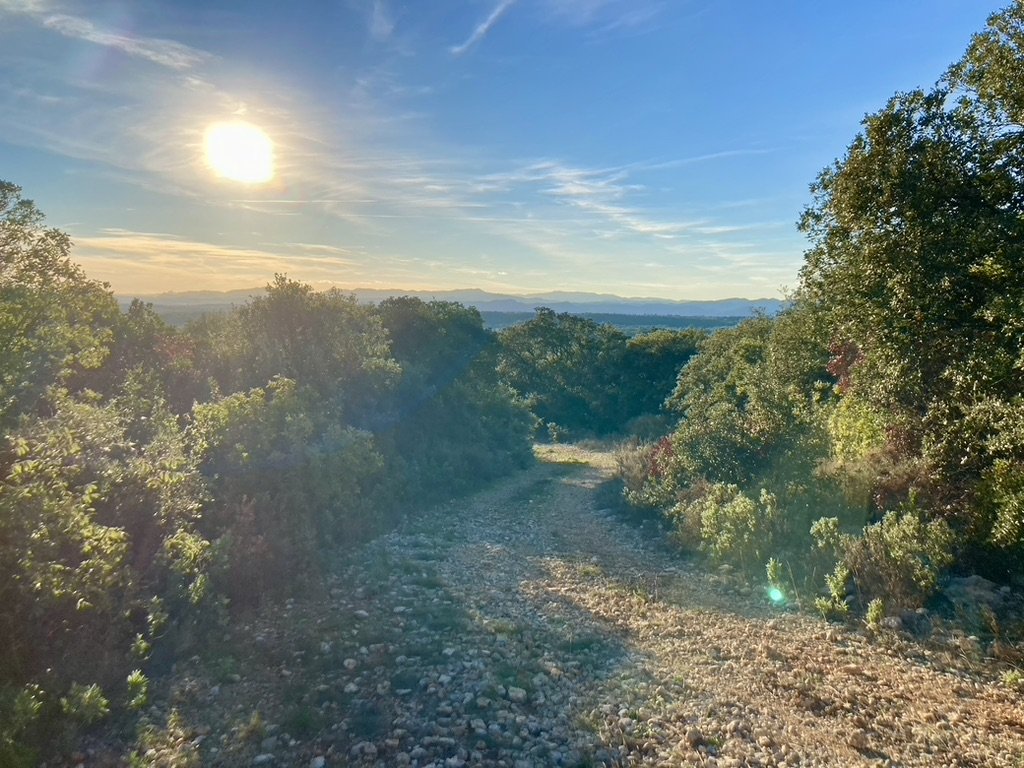Golden Fields, Golden Moments: Sunflowers in Euzet
Where Culinary Tradition embraces Contemporary Art
Most visitors to the Gard never realise they're driving through the backbone of French cuisine. The golden fields flanking country roads aren't just picturesque—they're producing the neutral oil that makes authentic silky French mayonnaise possible, the core ingredient that distinguishes real bistro cooking from its olive oil-heavy Mediterranean cousins.
In our working landscapes around Euzet-les-Bains, sunflowers represent a fascinating convergence: agricultural necessity meets contemporary artistic vision. While tourists are lured by ultra-vibrant lavender and nourishing olives, the real story of French gastronomy unfolds here in fields that supply both Michelin-starred kitchens in Uzès and beyond, while inspiring one of the world's most significant contemporary artists at his nearby studio-estate.
Beauty and utility need not be separate—our sunflower fields feed both the soul and the kitchen.
Why Sunflowers Define This Region
The sunflower fields of Euzet and beyond exist at the heart of a profound culinary tradition that visitors often miss entirely. While Provence markets its olive groves to visitors, the real foundation of French cooking lies in these golden seas that surround us each summer.
This working agricultural landscape has sustained local communities for generations, creating a cycle where beauty and utility converge. The same fields that stop visitors in their tracks each July provide the essential oils that define authentic French cuisine throughout the year.
The final act of a tournesol's performance: golden petals surrendering as thousands of oil-rich seeds reach perfect maturity.
The Agricultural Symphony: Understanding Sunflower Cultivation
The sunflower fields around Euzet reveal a sophisticated agricultural dance that will uplift and revitalise the most weary visitor.
Helianthus annuus—literally "annual sunflower"—demonstrates one of nature's most remarkable phenomena: heliotropism. Young sunflower buds follow the sun's path from east to west each day, maximising photosynthesis before settling into their final eastward orientation at maturity.
The French word tournesol—literally "turn-sun"—captures the essence of what makes these fields so mesmerising.
This behaviour isn't merely botanical curiosity—it's an agricultural strategy. Farmers plant in carefully calculated rows running north-south, ensuring optimal sun exposure while facilitating mechanical harvesting. The timing is critical: planting occurs from mid-April to early May, with the spectacular blooming period lasting just 2-3 weeks in mid-summer.
What distinguishes Gard sunflowers is the region's terroir—the clay-limestone soils retain moisture while providing excellent drainage, while the Mediterranean climate offers intense sunlight tempered by cooling mistral winds. These conditions produce sunflowers with exceptionally high oil content (42-48% compared to 35-40% in other regions).
When is the best time to see the sunflower fields in Southern France?
The Details You Need
🗓️ When: Mid-July through Early August
⏰ Peak Bloom: Dawn to dusk viewing, optimal light at sunrise and golden hour
📍 Where: Throughout the Gard countryside, and surrounding La Flânerie
🎟️ Access: Free to explore public roads and designated viewing areas
Sunflower Oil vs Olive Oil: French Culinary Secrets
The Culinary Revolution Hidden in Plain Sight
What sophisticated food lovers discover here challenges fundamental assumptions about French cuisine. While olive oil dominates Mediterranean marketing, sunflower oil forms the backbone of authentic French cooking, particularly in the art of mayonnaise—that foundational sauce every serious cook must master.
The science behind this preference is fascinating: sunflower oil's neutral polyunsaturated profile (primarily linoleic acid) creates stable emulsions without overwhelming delicate flavours. French mayonnaise achieves its legendary silky texture precisely because traditional recipes call for sunflower oil, not olive oil. The neutral character allows the delicate balance of egg yolk lecithin, Dijon mustard, and acid to shine through without interference, while olive oil's phenolic compounds can cause bitterness and emulsion breakdown.
ONE-MINUTE HOMEMADE MAYONNAISE
This makes about 350ml of very thick mayo.
INGREDIENTS
1 free range egg
1 tbsp white wine vinegar
1 tsp mustard
A pinch of salt
250ml sunflower oil
50ml water (optional, but makes a more "shop bought" texture)
METHOD
Put all the ingredients (except the water) in the beaker that comes with an immersion (stick) blender. Allow the oil to rise to the top, then plunge in the stick blender, pressing it against the beaker's base.
Run for a full 10 seconds, then very slowly tilt the head of the stick take at least 20 seconds.
The oil and egg should emulsify to a thick mayo.
Add the water and blend again if you like.
TIP: For an economical and/or vegan version, use 3tbsp of the liquid from a tin of chickpeas (aka "aquafaba") instead of the egg.
Culinary Applications Beyond Oil:
Sunflower seed flour appears in artisanal baking, providing protein and nutty flavor
Sprouted sunflower seeds offer restaurant-quality microgreens
Sunflower petals contain lutein and can be candied or used fresh in salads
Sunflower lecithin serves as a natural emulsifier in high-end chocolate making
The Elements That Make It Exceptional
Cold-Pressed Production Methods – Traditional stone mills preserve delicate flavours and nutrients that industrial processing destroys
Varietal Selection – Local farmers cultivate specific sunflower varieties like 'Melody' and 'Armada' chosen for oil quality over maximum yield
Harvest Timing Precision – Seeds are harvested at exactly 9% moisture content for optimal oil extraction and flavour development
Traditional French Mayonnaise Heritage – The foundation sauce of French cuisine, perfected using local sunflower oil techniques dating to the early 1900s
Nutritional Sophistication – High in vitamin E (alpha-tocopherol) and essential fatty acids, making it both a culinary and a health choice
Terroir Expression – Clay-limestone soils and Mediterranean climate create distinctly nutty, complex flavour profiles
Sustainable Agriculture – Sunflowers improve soil health through deep root systems and require minimal water compared to other oil crops
The Historical Context:
France became Europe's largest sunflower producer not by accident, but through deliberate agricultural policy in the 1960s-70s. Post-war France needed domestic oil production, and sunflowers adapted perfectly to regions like Languedoc where traditional crops struggled with changing climate patterns.
Fibonacci spiral patterns of the sunflower
Seed Architecture: Each sunflower head contains 1,000-4,000 individual seeds arranged in Fibonacci spiral patterns—a mathematical phenomenon that maximises seed density. This isn't coincidental; it's evolutionary optimisation for oil yield.
Environmental Benefits:
Sunflowers are phytoremediators—they extract heavy metals from soil. Fields around Euzet actually improve land quality while producing food, making them models for sustainable agriculture.
The Science Behind the Beauty: Advanced Sunflower Knowledge
Pollination Ecology: While sunflowers are primarily self-pollinating, they support over 70 bee species. Local sunflower honey develops distinctive characteristics—lighter in colour than wildflower honey, with crystallisation patterns that reflect the flower's natural geometry.
How to Do It Right: The Insider's Approach
Getting There
The sunflower fields begin just minutes from La Flânerie's gates. Explore the smaller roads toward Saint-Ambroix for more intimate encounters with working farms. Respect private property boundaries and stick to public roads for photography.
Where to Stay
Position yourself at La Flânerie in Euzet-les-Bains. This strategic location places you at the heart of sunflower country while offering sophisticated refuge from the summer heat.
What Sets The La Flânerie Experience Apart
Authentic agricultural landscape – Working farms and genuine encounters with rural French life
Contemporary artistic legacy – Proximity to Anselm Kiefer's La Ribaute in Barjac, where monumental sunflower installations explore themes of metamorphosis and cosmic transformation
Culinary connection – Witnessing the source of France's most essential cooking oil in its natural state
Photographic perfection – Miles of uninterrupted golden blooms with the dramatic backdrop of the Cévennes mountains
Seasonal exclusivity – A fleeting window of peak beauty that rewards timing over convenience
La Flânerie offers:
An artfully restored sanctuary dating to the 1700s, where heritage and sophistication coexist harmoniously
Just 15km from the charming market town of Uzès
Immediate access to pristine sunflower fields
At the foothils of The Cévennes
Self-contained privacy with sophisticated design sensibilities
Enjoy preferential rates: five nights or more outside peak season, seven nights during summer
___
3★ Meublé Tourisme Certified
4.8/5★ on Airbnb
___
LIMITED AVAILABILITY
Secure Your Dates During the Sunflower Season
Essential Resources
This insider's guide was crafted by Gaby Martin, proprietor of La Flânerie and long-time advocate for authentic regional experiences around Uzès and Southern France.
Last updated: July 5, 2025.






